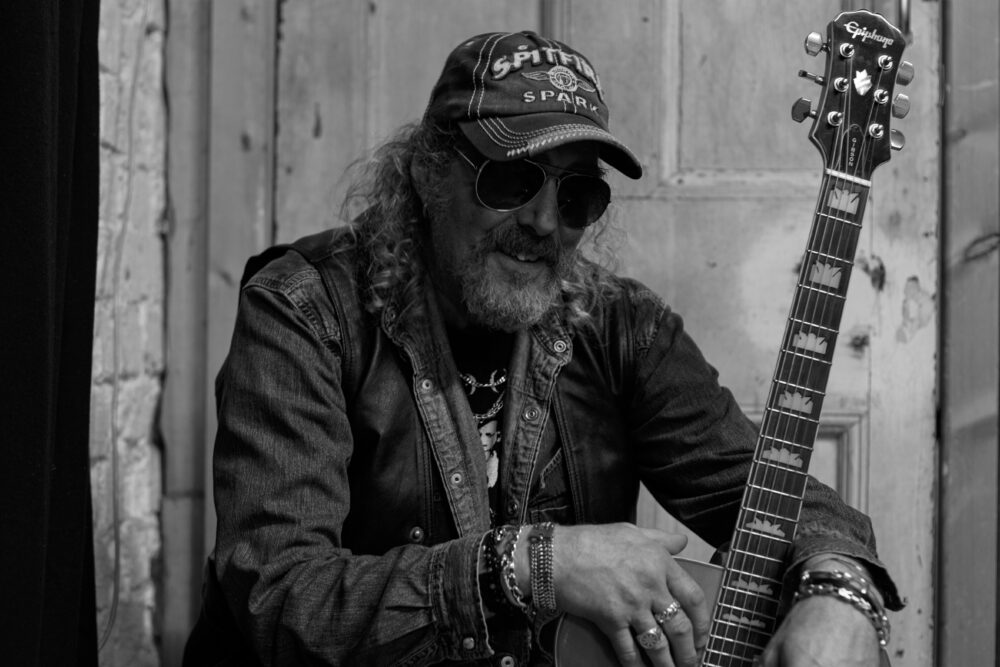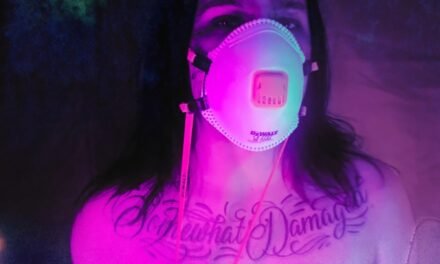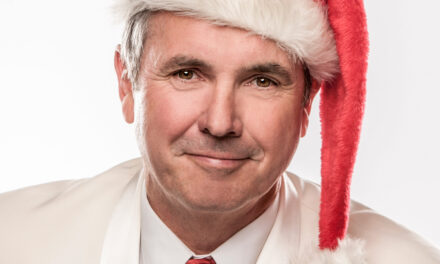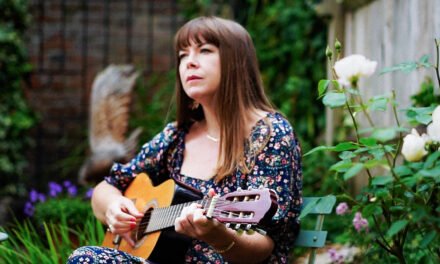In Conversation With Andy Sharrocks (Part One)


Words by Glenn Sargeant
Photo Credit: Supplied By Artist
Andy Sharrocks is a multi-talented individual as a vocalist, songwriter, guitarist and very knowledgeable about music and the industry. With the recent release of his triple vinyl LP ‘Country Rock n’ Roll n’ Durty Blues’ he kindly sat down for an in-depth conversation:
When did you start writing your own songs and do you remember the first song that you wrote?
I have been writing poetry since the age of twelve, and some of them were more like lyrics than poems. I remember the first line of one I wrote at that age, it was – “I walk around with wings of steel stapled to my chest.” Oh my goodness, such heavy words for a twelve year old. It was only about eight lines long but it was about trying to be free in a narrow minded society.
The first song I ever wrote with chords and a musical structure was a punk song called Just Another Reject (From Society), which was inspired by Patti Smith musically and all the people who I knew at the time lyrically. I have always liked to write about the underdog. But y’know I’d written lyrics for a dozen songs before that, just on scraps of paper. I remember the first one flooded into my head on a night bus, it was full of innuendo about guns and sex, but I’ve no idea what it was called or how it went, the same with the others. I gave them to the guitarist who would end up in Accident On The East Lancs. He lost them all, he lost most things, I just didn’t know it at the time. After that I wrote all my lyrics in old A5 diaries. It’s like a superstition, I have to write in an old diary. The first one is from 76, so that is when I seriously started writing. The one I’m writing in now is 2005.
You have released your new 3LP Vinyl ‘Country Rock N’Roll and Durty Blues’. How did you want to approach the recording of this album?
Well….I knew I wanted it to be organic, and live in the studio, with a full band on a lot of it. I also knew I wanted to play quite a lot of the instruments on it myself, particularly on the acoustic ones. I generally have definite ideas for the sounds on the songs, and have relied on other people in the past to try and interpret what I am hearing, it was fantastic just to be able to do as much as I could on the acoustic ones. After that it was just a vague idea of doing it live in a studio with great acoustics. I have to say, this project might not have come to fruition if it wasn’t for Danny Bourassa.
I used to manage his funk/metal/ragga band Rhythm Conspiracy back in the 90’s, and knew he was an outstanding guitarist, who would bring something very fresh to the table. We lost touch for many years as I moved to London, but then Danny made contact with some news that the bass player from the band had passed, so we hooked up at his life celebration. I went home and got to thinking about Danny, so I rang him and asked if he fancied collaborating, and he had no hesitation. What I didn’t know was he had a home studio in his house, so we demoed the songs there. We recorded the whole album on just acoustic guitars at first as he wanted to get a measure of where I was coming from, then we worked on each song building it up as I heard it, and sometimes as he heard it. Who did you have with you playing on the record?
As in the previous question I had Danny Bourassa on electric and acoustic guitars, then the nucleus of the band was Phil Watts on drums and Phil Cawsey on bass. Phil Watts is a very close childhood friend, in fact we are more like brothers than friends. He played in Manchester bands The Out and The Tunes, and was the session drummer on Jilted Johns Gordon Is A Moron. He also did a world tour with Gloria Gaynor. He brought Phil Cawsey into the picture. They have known each other for forty years and played together in a blues band so that was the rhythm unit sorted.
On top of that we had Mr Wilsons Second Liners who Danny brought into the fold. They are amazing brass players who do a lot of depping work, hence the Second Liners. But they also do dance covers in a New Orleans style and are sought after all Europe, so it was amazing they wanted to play.
The trombone player also doubles up on piano so he played the piano parts too. Danny also brought Michelle Turnbull into the equation. I knew I wanted a female backing vocalist, and she had done a session of her own in Danny’s studio, so he suggested her, and what a voice. Her mother is a professional opera singer. The other BV was a friend of mine John Edmundson. The fiddle player is Tim Marris who was an introduction from somebody who was due to play piano but didn’t. And the banjo player is a guy called Nick Pimbert, who I met in Todmordon when I went to see an old time Americana trio, but the fiddle player didn’t turn up and we got talking, and he was well up for it. And last but not least my sister Helen Hill on flute and the amazing vocal on Mississippi Beautiful. I wanted an old gaelic melody with an ethereal vocal in that song, and she specialises in medieval gaelic folk songs, so she was the obvious choice.
Her husband Chris Hill played cello on three tracks which was fantastic. It was totally out of their sphere of music as he has a cello quartet and is a conductor for a Bristol orchestra and Helen does a lot of folk festivals and choir work, but they loved it. It was amazing to have so many musicians. I am very lucky. Where did you record the album?
We recorded the whole thing at The Edge Studio in Cheshire, near Alderley Edge. We had looked at Blueprint in Manchester, but unfortunately it was just too expensive. But The Edge was great, it was in the middle of nowhere, so no distractions. Gaz Dupes the engineer was absolutely fantastic. Do you have any funny, interesting, memorable stories from the recording sessions?
When we walked in, Gaz looked at us, four geriatric old farts and thought this is not going to happen. We had not rehearsed as a unit, Danny had met Phil Watts back in Rhythm Conspiracy days, but he didn’t know his skills as a drummer, he had to trust in my judgement. I had met Phil Cawsey once but not played, so I had to trust Phil’s judgement.
I had never met Mr Wilsons Second Liners so I had to trust Danny’s judgement. But I just had faith. We all knew the songs from the demo’s, we were all at a level musically, and I knew it would work out. Gaz only let on later that he really didn’t think we would achieve what we did. So we went through each song four or five times then did a take, which was usually the one you hear on the album. Sometimes it took. two or three takes but no more than that. Everything was live, even the vocal. Gaz is such an amazing engineer, with his positioning of mics and such.
A poignant note was Victor Brox the legendary Manchester blues player was due to play on the album, but he got ill in December with a chest infection. Everybody including Victor thought he would pull through. I had even re-written How Could You Ever Marry An Actor in his favourite key B flat, after a phone conversation I had with him. He was going to play piano and trumpet on it, but unfortunately his health took a turn for the worse, and he left us two days before he was due to come in and lay his tracks down. Where is your hometown and could you please describe it in five words?
I don’t really have a place I call my hometown, I have moved around so much. I’m still looking for a hometown, but my birth town is Manchester, which in five words is wet, cultural, vibrant, musical, evolving. The latest single from the album which is available to download and stream is ‘Dead Man Walking’. What was the inspiration/story behind that song?
This was one of those songs which just flood into your head, and you don’t do too many, if any, tweaks to it. This one came whilst driving down from London to Littlehampton for a camping weekend. We were on the A24, and out of the blue these words and melody came. It wasn’t influenced by any specific incident. I wasn’t prepared for it, so I just had to keep repeating it to lodge it in my brain, then find a pen and paper before I put the tent up and write it all down. There was a pub on the site and I went for a nice pint of local brewed real ale and some scampi and chips. Those were the drinking days.
Was it a difficult album to write?
I find writing songs the easiest thing in the world, much easier than making egg and chips, or talking to a bigot. So no it wasn’t hard to write. I didn’t specifically think oh I’m going to write thirty six songs and make a triple album. I had most of them anyway, some of them date way back. For instance the verses of Only One I Trust were written when I was in Accident On The East Lancs in the 70’s, even back then I was wanting to write softer more tender songs, but the band was the wrong vehicle for them. Farmyard Blues and Where You Gonna Run To were written in 82, This Hearts On Fire Now, and Feel A Little Lowdown, Do You Still Think Of Me, Welcome To The Real World were mid 80’s, a lot of the songs were written in the early 2000’s during a particularly prolific period. Old Leather Coat, Get It While You Can,, Where’s All The Love Gone, Get Some Distance, Soul Sister, Christopher Cullingham, Silver Tongued Phantom Lady, Too Much Time, Saucier Man and Little Boogaloo were all written relatively recently, Mississippi Beautiful was an interesting one, I worked on it over a period of years, and I didn’t know where it was heading, it had a mind of it’s own, and then it turned out that the whole song was being narrated by the fiddle player, who was in love with singer in the bar where he played.
Some lyrics just tumble out, some I have to do various drafts if I’m not happy, but they are very important to me., as much as the music I would say. If I wasn’t happy with the words then I wouldn’t record the song. Even a nonsense song Like Little Boogaloo, the words had to be right, and I did change them before I was happy with the rhythm and the cadence.
I polished them all up of course, particularly the older ones. They say you can’t polish a turd, but I think you can. Having said that Where You Gonna Run To is exactly how I heard it when I wrote it in my bed at midnight all those years ago. But none of the bands I played with since would have been right for it. That’s what I like about being a solo artist, I can get songs sounding like I hear them, not vaguely like I hear them. Do you have any favoured stage instruments, effects, pedals, microphones etc?
Personally I don’t use pedals, I use mainly acoustic instruments, my acoustic guitars are Epiphone J200 and Hummingbird Pro, and a really nice Taylor which was given to me by Matt Vee, Bobby Vee’s nephew. I use a mandolin, and a Tonewood resonator. Electrically I use an Epiphone Casino and a Squire Telecaster which go through a Peavey Vypyr. I don’t go in for all this guitar snobbery, in fact I go the other way, if it feels good and sounds like you want then it is good as far as I’m concerned. Do you have any plans to support the release with any live dates?
Yeah I want to play as many live dates as possible, either solo, as a duo with Danny or a five piece band. I am approaching loads of festivals and independent record shops, and I hope to play The 100 Club on Feb 14th with the band. Ideally I would love to get an agent, as gigs and festivals would rather do business with an agent than the artist.
How do you look after your voice?
My voice, well, as Andy Snipper once said it is not the most mellifluous of instruments, but it does have an edge. In fact it is downright rough and hard and gravelly but it’s my voice, and even those qualities need looking after. So, I don’t smoke or drink alcohol or do drugs any more so that is a great help. The only hot drink indulge in is lemon and ginger tea with a spoonful of manuka honey. I haven’t drunk caffeine for over thirty years. Before a gig I’ll suck on a Vocalzone lozenge, and that was the magic ingredients which helped me to sing all day every day whilst recording the album. Who designed/created the album cover artwork and what was the inspiration?
I designed the album sleeve and insert. I had the title first, and I was thinking of little advertising slogans in case I actually got it together and it came out, and I thought, Sounds like it says in the title, then that Cuprinol fence dye jingle popped in my head – it does what it says on the can, and I immediately thought of the Andy Warhol Campbells soup can prints, and instead of soup it was a gumbo which is a Cajun dish made up of many ingredients which is what the music is. I got some images up of the reverse of the tin of soup and changed the wording, as I did on the front, so it actually says great for eating, I changed it to great for listening, on the back I used the instruments as the ingredients, and changed the cooking instructions to listening instructions. I left a box blank to sign and number so they will be more collectable.
I wanted to print the lyrics on the insert but it would have run over eight pages, so I thought I would say who played what on each track, have a page of thanks, then I thought of the drawing of me from 82 propping up the bar and thought it was the perfect finishing touch, that is an amazing drawing, the lady who did it had only met me once for about five minutes and turned up with this drawing which is so accurate of how I looked and behaved at the time.
The inside photos are reminiscent of ‘Exile On Main Street’ but not purposefully, I just thought all those black and white photos together make a great montage. There are some completely random photos like the one of a porcelain skull which came free with a tequila bottle, or my old friend Mark Hartley who had nothing to do with the album but we talk by email all the time and I thought it would be nice to include him. There is a flyer for the original Deeply Vale free festival which I was involved in the 70’s.There are a couple of Danny Bourassa doodles. There is a photo of The Black Sedan record shop in Oxford Rd Manchester, who specialised in Porky Pig bootlegs at the time, so very hip. I rang them when I had left school and asked if they had any jobs and they said not at that branch but they were opening up a branch in Rochdale, where I lived for the next seven years as it was full of hippies and artists and music people and loads of drugs. If I hadn’t made that phone call my life would have turned out quite differently, sort of same same but different as they say in Thailand.
A guy called Steve Jacuzzi, who worked on the first four Led Zep albums and all the live Led Zep posters from the 60’s and 70’s helped to create the finished product as I just sent him a coloured drawing of the front and back, then all the photos as I wanted them laying out, but they were all different sizes and tones so he had to have a bit of jiggery pokery with those. Chris Hewitt who was also instrumental in the Rochdale scene and Deeply vale introduced me to him. He has his own Ozit/Morpheus record label and Steve did a lot of his design over the years.
One of my favourites on the record is ‘Saucier Man’ could you tell us the idea for that track?
‘Saucier Man’, the very original impetus for this song, was watching Apocalypse Now. I loved that movie and must have watched it at least twenty times. And there is a part where the Frederick Forrest character goes into the jungle to collect some mangos and a tiger jumps out at him and he runs back to the boat screaming “Tiger! fucking tiger man!, fucking tiger just tried to kill me, I was just collecting mangos for a sauce, I’m just a fucking saucier and I get attacked by a tiger.” Or words to that effect. So Saucier was lodged in my head, and he was from New Orleans supposedly which is where they have Saucier Men in their restaurants. Then if you put Bonjour Mademoiselle in front of, let me be your saucier, it takes on a whole different meaning and there is so much innuendo and wordplay you can use with that image. To me it’s like an adult version of Hank Williams Jambalaya. And The Second Liners were all over it like a rash.
Phil Watts didn’t play drums on this one as I really wanted that real New Orleans kind of drumming and Howard Jacob does it all the time with the band. I love the interplay between the brass and Danny’s guitar and that was done in four or five run throughs again. On reflection I would have had Henry put some piano down on it. But I love it too, as it is.
Where can people purchase a copy of ‘Country Rock N’Roll and Durty Blues’?
The album can be bought from my website www.andysharrocks.net or from good independent record shops. It is distributed by Cargo. What makes Andy Sharrocks happy and what makes you unhappy?
Dogs make me happy, a beautiful sunrise and sunset, playing music, making a nice chicken balti, playing a good gig, writing a good song, painting a picture, doing a sculpture makes me happy, and the days my old lady is well makes me very happy as she is ill most of the time.
War, discrimination, racism, sexism, poverty, homelessness, Suella Braverman, plastic and religious feuds make me unhappy, it’s gotta be the same god hasn’t it, it’s so archaic to be saying my god is better than yours.
Photo Supplied By Artist
Andy Sharrocks triple vinyl set ‘Country Rock N’Roll and Durty Blues’ is out now on Roach Records and distributed by Cargo.
To purchase the record and for more information visit his official website here: www.andysharrocks.net




